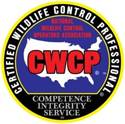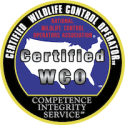Stray, roaming, and feral (wild) dogs are a significant problem throughout our Mojave desert region!
These dogs are on a killing spree. They entered a fenced yard and killed nine pet chickens that had been hand-raised by a child in just a few moments.
FAQ: Dogs Attacking Livestock
Stray, roaming, and/or feral (wild) dogs have become a significant problem throughout our Mojave Desert region.
More often than not, dogs that enter private properties to kill livestock and poultry are dogs that are not well-cared for. They are often unaltered, unvaccinated, unlicensed and are allowed to roam-at-will. (All are all violations of county and state laws.) San Bernardino County has a leash law, even in rural areas.
More often than not, dogs that enter private properties to kill livestock and poultry are dogs that are not well-cared for. They are often unaltered, unvaccinated, unlicensed and are allowed to roam-at-will. (All are all violations of county and state laws.) San Bernardino County has a leash law, even in rural areas.
Many livestock owners don’t realize they have a problem until after animals are found severely injured or dead, and normally the dogs are long gone. Dogs are smart enough to know when people are nearby, and will often wait until the “coast is clear” before entering to attack. Most, but not all attacks happen at night.
This is a serious problem that cannot be “wished away,” and requires immediate attention. They dig quickly, even under multiple fences, and can easily scale many fences.
Some dogs are bold enough to return after attacking livestock with people present. Most dogs do not have a natural fear of humans, and can be dangerous.
Unfortunately, dogs will return to the "scene of the crime" repeatedly.
This is a serious problem that cannot be “wished away,” and requires immediate attention. They dig quickly, even under multiple fences, and can easily scale many fences.
Some dogs are bold enough to return after attacking livestock with people present. Most dogs do not have a natural fear of humans, and can be dangerous.
Unfortunately, dogs will return to the "scene of the crime" repeatedly.
Having dogs enter your private property that cause injury or death to your pets or livestock is an unpleasant, heartbreaking, and often, a very expensive experience.
Once dogs find a food or “play” source, they often return to the same property. They may kill many animals, but none may be missing.
Larger animals (including horses and cattle) are found severely injured, and often must be humanely euthanized.
Regardless of why you keep animals, you have the right to the peaceful enjoyment of your property.
Once dogs find a food or “play” source, they often return to the same property. They may kill many animals, but none may be missing.
Larger animals (including horses and cattle) are found severely injured, and often must be humanely euthanized.
Regardless of why you keep animals, you have the right to the peaceful enjoyment of your property.
By far, the most serious problem is with dogs that roam, often remain friendly with people, but also have strong prey drives. They may have a home, but pack up with other dogs because they are not well cared for, or simply because of high prey drive and are allowed to roam.
Most dogs attack livestock as “play.” When with other dogs, they feed off of one another's energy, and can inflict serious damage in a short time. We often see this "play" behavior in our own dogs when they chase rabbits and squirrels.
With little to no fear of humans, they aren’t afraid to enter properties, dig under fences (or jump over them,) or enter buildings (such as barns) or approach livestock close to homes.
Most dogs attack livestock as “play.” When with other dogs, they feed off of one another's energy, and can inflict serious damage in a short time. We often see this "play" behavior in our own dogs when they chase rabbits and squirrels.
With little to no fear of humans, they aren’t afraid to enter properties, dig under fences (or jump over them,) or enter buildings (such as barns) or approach livestock close to homes.
The safest and most effective strategy is live trapping. While the law does provide for the killing of dogs in the act of worrying or attacking livestock, rarely does a property owner discover dogs in the act of doing so.
It is not easy to shoot at hit “moving targets,” often in the dark, and shooting at one or more dogs already in the act of attacking your livestock may result in shooting your own animals.
Some areas aren’t safe or legal for firearms use.
Each issue is different, so the methods we use aren’t the same for every case.
We understand that dealing with such issues can cause problems between neighbors. We make every effort to trap invading dogs out of sight of other properties.
It is not easy to shoot at hit “moving targets,” often in the dark, and shooting at one or more dogs already in the act of attacking your livestock may result in shooting your own animals.
Some areas aren’t safe or legal for firearms use.
Each issue is different, so the methods we use aren’t the same for every case.
We understand that dealing with such issues can cause problems between neighbors. We make every effort to trap invading dogs out of sight of other properties.
Trapping is a legal strategy to contain dogs that have already entered your private property. A trapped dog is proof that the dog was out of the owner's control, and entered your property,
This sets up the most important legal hurdle of all: Proving the identity of the dogs. Should you have financial losses, and animal control is able to locate an owner, you have the information needed to start whatever legal proceedings are necessary in your specific case.
If an owner has not vaccinated, licensed, and has allowed the dog to roam, the owner will be cited and fined for those violations.
This sets up the most important legal hurdle of all: Proving the identity of the dogs. Should you have financial losses, and animal control is able to locate an owner, you have the information needed to start whatever legal proceedings are necessary in your specific case.
If an owner has not vaccinated, licensed, and has allowed the dog to roam, the owner will be cited and fined for those violations.
Feral dogs do not depend on humans to feed and shelter them. They reproduce and raise their puppies without any human intervention. They are the descendants of domestic dogs that ended up in the wild-and survived. They are exceptionally resourceful and have found ways to survive in our harsh and unforgiving environment.
Feral dogs are opportunistic hunters and survive on wild game if not in a populated area. They are generally shy and avoid contact with people.
When cornered, they are not friendly. They often display dangerous/vicious behavior, and often avoid eye contact completely. They will defend themselves if they feel threatened.
Feral dogs have learned how to survive on the fringes of our rural communities. They are secretive, hunting from dusk to dawn, and remain hidden during the daylight hours. They may hunt alone, or in packs. The distances that feral dogs travel is based on food availability. They may have a range of only a few square miles if abundant livestock and/or wild prey is readily available. In the absence of regular food sources, they may have a range of 50 square miles.
Feral dogs are opportunistic hunters and survive on wild game if not in a populated area. They are generally shy and avoid contact with people.
When cornered, they are not friendly. They often display dangerous/vicious behavior, and often avoid eye contact completely. They will defend themselves if they feel threatened.
Feral dogs have learned how to survive on the fringes of our rural communities. They are secretive, hunting from dusk to dawn, and remain hidden during the daylight hours. They may hunt alone, or in packs. The distances that feral dogs travel is based on food availability. They may have a range of only a few square miles if abundant livestock and/or wild prey is readily available. In the absence of regular food sources, they may have a range of 50 square miles.
San Bernardino County Ordinances
§ 32.0108 Control of Animals.
(a) No person owning or having control of any animal shall permit such animal to stray, to run at large upon any private or public street, sidewalk, school ground, public park, playground, place of public assembly or any other public place or upon any unenclosed private lot or other unenclosed private place or upon any private property without the consent of the owner or person in control thereof. Parkways comprising the area between the street and sidewalk shall be included as private property for purposes of this Section.
(b) Any person who finds any animal which has strayed or is running at large upon his or her own property or any other place contrary to the provisions of this Chapter, may take possession of and hold same provided, within four hours after securing possession thereof, he or she shall notify the Health Officer or Animal Control Officer or the Sheriff of the fact that he or she has such animal in his or her possession and give the Health Officer, Animal Control Officer, or Sheriff full information in regard to the animal, including a complete description of the animal and license number, if any, and shall surrender the animal to the Health Officer, Animal Control Officer, or Sheriff upon demand.
(c) No person may lawfully bring his or her dog out of his or her property unless:
(1) The dog is restrained by a leash and is in the charge of a person competent to restrain the dog; or
(2) The dog is properly restrained and enclosed in a vehicle, cage or similar enclosure.
§ 32.0108 Control of Animals.
(a) No person owning or having control of any animal shall permit such animal to stray, to run at large upon any private or public street, sidewalk, school ground, public park, playground, place of public assembly or any other public place or upon any unenclosed private lot or other unenclosed private place or upon any private property without the consent of the owner or person in control thereof. Parkways comprising the area between the street and sidewalk shall be included as private property for purposes of this Section.
(b) Any person who finds any animal which has strayed or is running at large upon his or her own property or any other place contrary to the provisions of this Chapter, may take possession of and hold same provided, within four hours after securing possession thereof, he or she shall notify the Health Officer or Animal Control Officer or the Sheriff of the fact that he or she has such animal in his or her possession and give the Health Officer, Animal Control Officer, or Sheriff full information in regard to the animal, including a complete description of the animal and license number, if any, and shall surrender the animal to the Health Officer, Animal Control Officer, or Sheriff upon demand.
(c) No person may lawfully bring his or her dog out of his or her property unless:
(1) The dog is restrained by a leash and is in the charge of a person competent to restrain the dog; or
(2) The dog is properly restrained and enclosed in a vehicle, cage or similar enclosure.
Food and Agricultural Code
Division 14
Chapter 5
Article 1
31153:
Seizure of dog entering place where livestock or poultry confined:
Any dog entering any enclosed or unenclosed property upon which livestock or poultry are confined may be seized by the owner or tenant of the property or any employee of the owner or tenant. No action, civil or criminal, shall be maintained against the owner, tenant, or employee for the seizure of any such dog.
Section 31102:
Except in an area in which the provisions of Article 2 (commencing with Section 31151) of this chapter apply or as otherwise provided in Section 31104, any person may kill any dog in any of the following cases:
(a) The dog is found in the act of killing, wounding, or persistently pursuing or worrying livestock or poultry on land or premises which are not owned or possessed by the owner of the dog.
(b) The person has such proof as conclusively shows that the dog has been recently engaged in killing or wounding livestock or poultry on land or premises which are not owned or possessed by the dog’s owner. No action, civil or criminal, shall be maintained for the killing of any such dog.
Division 14
Chapter 5
Article 1
31153:
Seizure of dog entering place where livestock or poultry confined:
Any dog entering any enclosed or unenclosed property upon which livestock or poultry are confined may be seized by the owner or tenant of the property or any employee of the owner or tenant. No action, civil or criminal, shall be maintained against the owner, tenant, or employee for the seizure of any such dog.
Section 31102:
Except in an area in which the provisions of Article 2 (commencing with Section 31151) of this chapter apply or as otherwise provided in Section 31104, any person may kill any dog in any of the following cases:
(a) The dog is found in the act of killing, wounding, or persistently pursuing or worrying livestock or poultry on land or premises which are not owned or possessed by the owner of the dog.
(b) The person has such proof as conclusively shows that the dog has been recently engaged in killing or wounding livestock or poultry on land or premises which are not owned or possessed by the dog’s owner. No action, civil or criminal, shall be maintained for the killing of any such dog.
Dozens of animals killed by pack of dogs
Dog attacks on livestock spark plea from landholders
Dog owner faces felony vandalism charges in cow attacks
 |  |  |  |  |
 |  |  |  |  |  |





